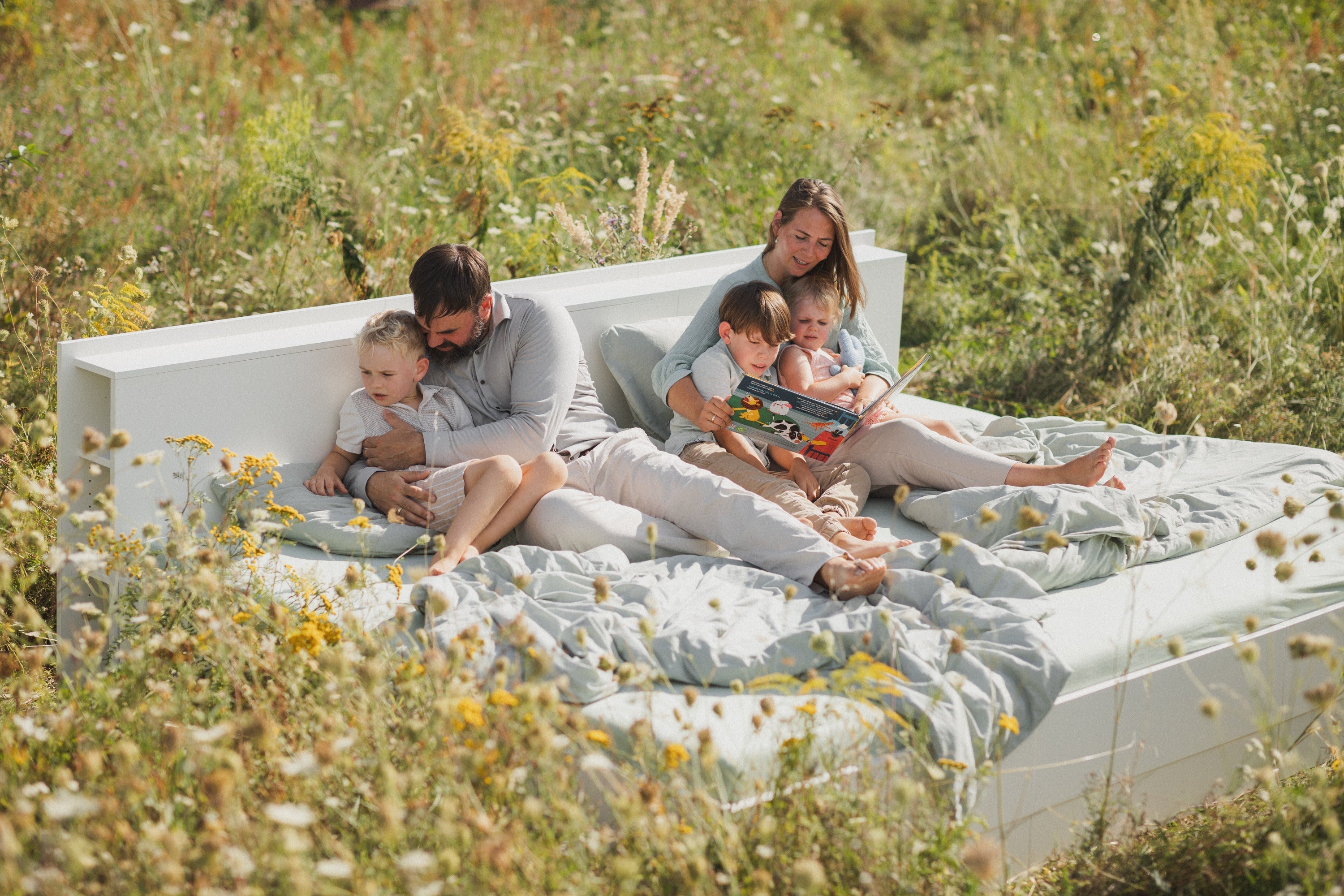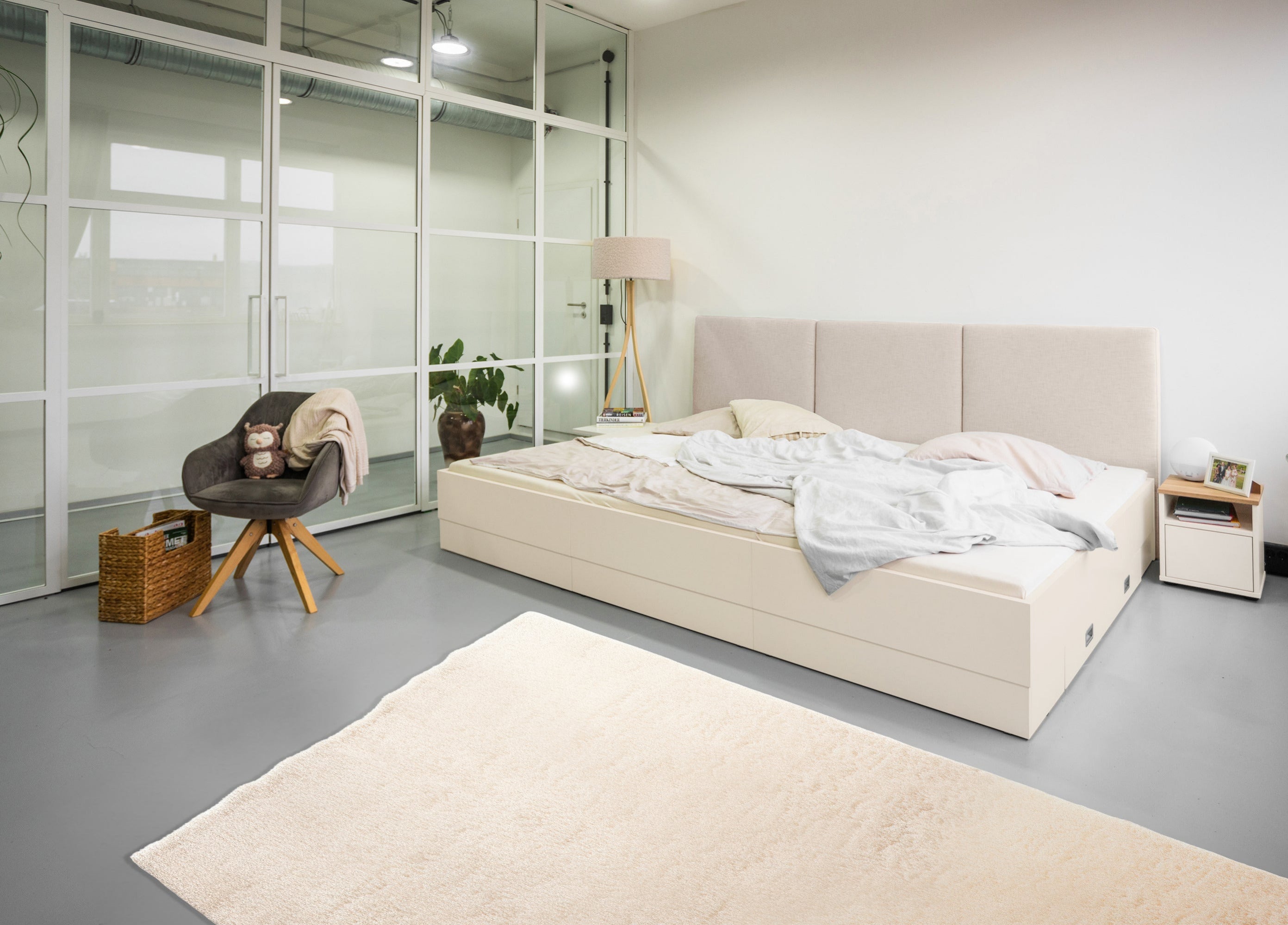
How long should children sleep in their parents' bed? A guide
The decision whether or not to share a bed with a child is one of the most common discussions parents have. Especially for the parent balancing everyday life with the needs of the child, the question of the right time to "wean" them from the co-sleeping arrangement can be a real challenge.
In this blog post, we take a look at the different perspectives, scientific findings, and practical tips to help you make an informed decision.
What is the family bed?
Co-sleeping refers to the practice of parents and children sleeping together in the same bed. While some parents practice this during the early years, others prefer to let the child sleep in the same bed until early elementary school.
Advantages of the family bed
- Bonding and closeness: Especially in the first years of life, close physical contact is important for a child to build a strong bond with their parents through closeness and affection. Co-sleeping promotes communication and strengthens trust and child development. The child can grow in a secure environment.
-
Breastfeeding at night: Breastfeeding mothers often find it more convenient to have their baby or toddler sleep nearby, making it easier and faster to breastfeed at night. Allowing the child to sleep in the parents' bed also promotes self-determined motherhood during breastfeeding.
-
Better sleep: Some parents report that both they and their children sleep better when they share a bed. Especially in the early years, children can often experience anxiety or sleep problems that are soothed by the closeness of mom and dad.
-
Security: Sleeping together can give parents a sense of security because they can respond quickly to their baby and child if they wake up or become restless. Parents and children should feel comfortable sharing a bed.
Are there any disadvantages?
As with any parenting decision, there are potential challenges to co-sleeping that should be considered. Not every household or family will be comfortable with this practice.
Restriction of privacy:
Parents who co-sleep often report a lack of privacy, which can lead to tension, especially in relationships. It can be difficult to find intimate space when the child sleeps in the same bed. Creative solutions and open communication between parents are required.
Sleeping habits:
Some parents find that their children have a harder time learning to sleep alone if they share a bed with their parents for too long. There's a risk that the child will become very accustomed to parental physical contact and have difficulty sleeping in their own room.
Risk to sleep quality:
Especially if the child takes up a lot of space in the bed, parents' sleep can be disrupted. In some cases, sleeping in the parents' bed can lead to sleep disturbances or a lack of sleep. There isn't enough room for everyone.
Security risks:
Although rare, there are studies that suggest that sleeping with young children in the same bed can be a safety risk under certain conditions (e.g., excessive bedding, soft mattresses, or alcohol consumption by parents).
How long should children sleep in the family bed?
The question of how long co-sleeping should last isn't easy to answer, as it depends heavily on the family's individual needs and desires. However, there are some general recommendations and guidelines.
1. Babies and toddlers (up to 2 years)
A child's first two years are particularly formative, and many parents choose to have their baby or toddler sleep in the same bed as their child. During this time, close proximity and physical contact are important, both for the child's emotional development and for the practical convenience of nighttime breastfeeding. The American Academy of Pediatrics (AAP) recommends that infants sleep in the parents' room for the first few months, but not in the same bed. This is intended to reduce the risk of sudden infant death syndrome (SIDS).
However, for breastfeeding mothers, having their baby close by can be very convenient. As long as safety precautions are taken, such as removing pillows, blankets, and other potential hazards, co-sleeping can be a healthy solution in the early years and offers more peace and quiet when the baby needs nighttime closeness.
2. Preschool age (2–5 years)
During preschool, it often becomes more difficult to allow your child to continue sleeping in the same bed as your child. During this phase, it's helpful to establish gentle sleep habits and allow your child to sleep in their own bed while maintaining a sense of closeness to their parents.
However, there are no rules. Some families prefer to continue sleeping together in one bed, while others begin the transition to a separate bed during this phase.
3. School age (from 5 years)
From the age of five, many children begin to prefer their own bed. However, if a child wishes to continue sleeping in the family bed, it's important to respect this, as long as it doesn't negatively impact the parents' sleep. Parents' own needs should be recognized. The transition should be gentle and unpressured, offering the child alternative, supportive sleeping habits.
Tips for the transition to your own bed
-
Slow introduction: Start by letting the child sleep in their own bed at night, but with the option to come to the parents if they feel anxious.
-
Create a cozy bed: Make sure your child's bed is appealing and comfortable. A favorite stuffed animal or a special night light can help make their bed a safe and familiar place.
-
Rituals and security: Create consistent bedtime routines that provide your child with a sense of security and comfort. For example, read a book or sing a song.
-
Be patient: Let the child know that it's okay to feel insecure at first, but that they are still loved.
Conclusion: There is no fixed rule
There is no set rule for how long children should sleep in the same bed. Every child and every family is unique, and there is no "right" answer. The decision should be based on the individual needs of the child and the parents. It is important that parents always keep their children's safety and well-being in mind and pay attention to their child's cues. The transition should be a respectful and gentle process that supports the child and helps them develop confidence in their own sleeping habits.





1 comment
Hallo,
ich finde den Blog super, habe nur eine Kleinigkeit die mich persönlich stöhrt.
Ich habe zwei Kinder die beide nicht gestillt wurden aber auch mit Flasche super groß geworden sind.
Finde es schade, dass hier nur auf stillende Mütter hingewiesen wird. Die kleinen brauchen die selbe Nähe wenn sie die Flasche bekommen.
Ramona
Leave a comment
This site is protected by hCaptcha and the hCaptcha Privacy Policy and Terms of Service apply.